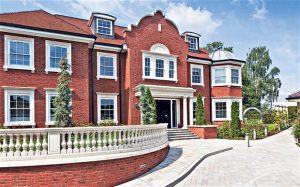London’s Suburban Real Estate Prices Are Skyrocketing
 London landlords looking to make a killing in real estate should avoid the city center and head for the suburbs—that is, if they’re not already too late.
London landlords looking to make a killing in real estate should avoid the city center and head for the suburbs—that is, if they’re not already too late.
Such is the picture to emerge from London’s latest property figures, which suggest that the city’s notoriously expensive inner west may have peaked, while prices in humdrum suburbs are going through the roof. The new figures, shown in a set of visualizations by data scientist Jay Patani, refine the picture of a city being turned inside out, with the poorer residents that once dominated the inner city being scattered to the outer districts.
A recent report from Centre for London showed that poverty was growing fastest in suburban areas that, while not exactly wealthy, had not historically been known as centers of deprivation. These new maps also confirm another trend: as less wealthy Londoners scatter from the city core, they’re pushing up prices.
Take this straightforward map of property prices. As you’d expect, the central and inner western boroughs have far higher prices than elsewhere. (Londoners might be surprised to see the mixed-income borough of Camden make the cut, but it pays to remember that it includes both central Covent Garden and the always wealthy hillside district of Hampstead.) Average prices fade as you head south and east, though never below a considerable threshold of £350,000 ($504,000).
In the above map of price rises, a very different picture emerges. Prices in the innermost boroughs have actually slumped; in Westminster, for one, they’ve fallen by a hefty 8.2 percent. These figures could be harbingers of a possible future trend that is both feared and desired—a potential property crash, at least in the luxury market.
Meanwhile, London’s cheaper properties are getting ever more unaffordable. The highest average price rise—a galloping 16.5 percent—is in the historically low-income borough of Newham, home to London’s Olympic Park. The western fringes of Newham, in particular, have been on the up for a while; they’re an overflow zone for people who can no longer afford parts of now-fashionable Hackney and Tower Hamlets.
What’s arguably more striking is evidence of sharp rises in boroughs further out. This is not just about middle- and upper-income residents returning to the inner city. It may also be about essentially suburban, farther-flung areas becoming the only option for many buyers—already themselves a relatively elite group in unaffordable London.
Read more…http://www.citylab.com/housing/2016/02/map-london-suburb-real-estate/459717/

 USA 917-679-1211
USA 917-679-1211







 © Jackson Lieblein, LLC 2015.
© Jackson Lieblein, LLC 2015.
